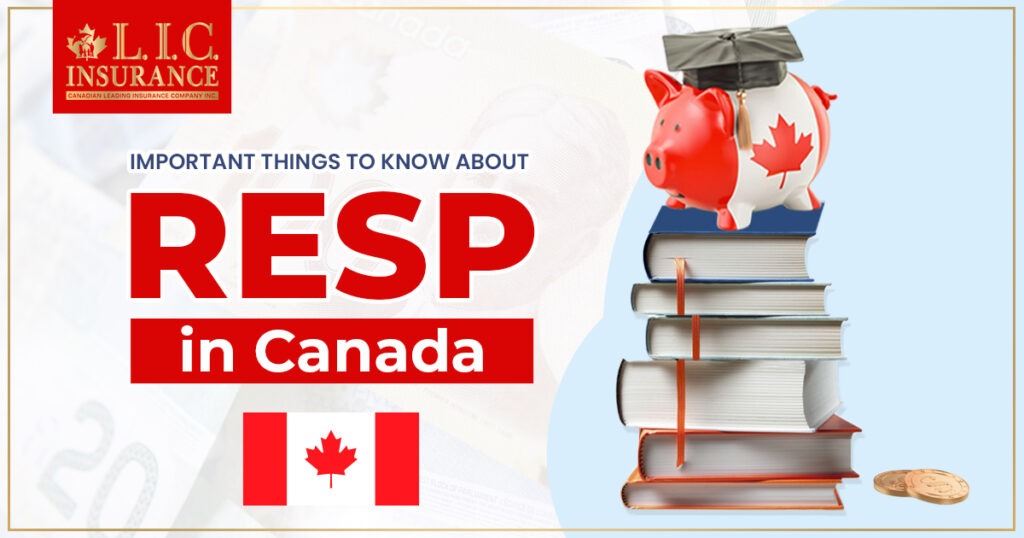What is a Super Visa Income Requirement?
By Canadian LIC, October 16, 2023, 8 Minutes
- What is a Super Visa Income Requirement?
- What is a Super Visa?
- The Super Visa Income Requirement
- What is the Minimum Income Requirement?
- LICO Table For 2024
- What is the Responsibility of Buyer Before Buying a Super Visa Insurance?
- How to Prove Your Income?
- Calculating the Minimum Necessary Income (MNI)
- Meeting the Income Requirement: Tips and Strategies Broker in Canada?
- To Sum Up

Canada is renowned for its stunning landscapes, multicultural cities, and high standard of living. It’s no wonder that many Canadian immigrants wish to reunite with their families and share in these opportunities. The Canadian government acknowledges the importance of family unity and offers various visa options, one of which is the Super Visa. In this blog post, we will get to know the Super Visa income requirement in Canada, what it entails, and how it can be a pathway to bringing your loved ones to join you in Canada.
What is a Super Visa?
The Super Visa is a special type of visa designed to facilitate family reunification in Canada. It is primarily aimed at parents and grandparents of Canadian citizens and permanent residents. Unlike a regular visitor visa, which typically allows visitors to stay in Canada for up to six months at a time, the Super Visa provides a unique opportunity.
With a Super Visa, eligible family members can stay in Canada for an extended period, usually up to five years, without having to renew their status. This means that parents and grandparents can enjoy more extended and uninterrupted stays with their loved ones in Canada.
Read More – About Super Visa
The Super Visa Income Requirement
The Super Visa comes with specific eligibility criteria, one of the most crucial being the income requirement. To apply for a Super Visa, the Canadian sponsor (the child or grandchild inviting their parent or grandparent) must meet a specific income threshold. This threshold is intended to demonstrate the sponsor’s financial ability to support their parents or grandparents during their stay in Canada.
What is the Minimum Income Requirement?
The minimum income requirement for the Super Visa is calculated based on the size of the sponsor’s family and the number of family members they plan to support, including the parents or grandparents they are inviting. This income threshold is assessed using the Low Income Cut-Off (LICO) figures published annually by Statistics Canada. It is essential to note that the LICO figures change each year, so it’s crucial to consult the most up-to-date figures at the time of application.
The income requirement typically falls under three categories:
For single sponsors: If you are sponsoring your parents or grandparents and you have no dependents, the minimum income requirement is calculated based on the LICO for your family size.
For sponsors with a spouse or common-law partner: If you have a spouse or common-law partner and you are sponsoring your parents or grandparents, the minimum income requirement is typically higher, as it considers your partner’s income as well.
For sponsors with dependents: If you have dependents (children or other family members who rely on you for financial support), the income requirement increases accordingly.
LICO Table For 2024
The low-income Cut-off (LICO) table offers information about the poverty line in urban areas of Canada. LICO changes every year due to inflation. If your settlement funds are equal to or lower than the values of this table based on your family size, you will be categorized as a LICO.
Do you know you need a document to prove that you are meeting the Low Income Cut off Minimum (LICO) if you are applying for a Super Visa for your parents or grandparents?
Let’s have a look at LICO Table for 2024
| SIZE OF FAMILY UNIT | One person | LICO – 6 Months |
|---|---|---|
| One person | $28,339 | $14,170 |
| Two persons | $35,282 | $17,641 |
| Three persons | $43,373 | $21,687 |
| Four persons | $52,662 | $26,331 |
| Five persons | $59,728 | $29,864 |
| Six persons | $67,362 | $33,681 |
| Seven persons | $74,998 | $37,499 |
| If more than seven persons, for each additional person, add | $7,634 | $3,817 |
What is the Responsibility of Buyer Before Buying a Super Visa Insurance?
Also note, that it is the responsibility of the buyer of the insurance to get the tentative effective date changed to make sure that the insurance is in effect at the preferred date (that is the day your parents land in Canada). If your application is rejected due to any reason the premium paid on this insurance will be reimbursed.
There are a number of super visa insurance, it is essential that you compare the coverage and invest in the policy that offers you the best coverage. Some of the important factors to remember while choosing super visa insurance is that it must be issued by a certified Canadian insurance company, it should offer $100, 000 health/medical insurance coverage and must be valid for at least 1 year. For more details about super visa insurance, get in touch with our experts now.
Get The Best Insurance Quote From Canadian L.I.C
Call 1 844-542-4678 to speak to our advisors.

How to Prove Your Income?
Proving your income is a crucial step in the Super Visa application process. You will need to provide documents and evidence that demonstrate you meet the minimum income requirement. Here are some of the key documents you may be required to submit:
- Notice of Assessment (NOA): This document is issued by the Canada Revenue Agency (CRA) and provides a summary of your income, deductions, and credits for a specific tax year. Your NOA is a crucial piece of evidence that shows your income.
- Employment Letter: A letter from your employer stating your annual salary, job position, and the length of your employment can be helpful in demonstrating your income.
- Pay Stubs: Recent pay stubs can provide additional evidence of your income. They show your income on a regular basis and can be used to support your application.
- Bank Statements: Bank statements can demonstrate your financial stability and provide additional evidence of your ability to support your parents or grandparents during their stay.
- Affidavit of Support: If your income alone does not meet the minimum requirement, you can include an Affidavit of Support from another family member who meets the income threshold.
- Property Documents: If you own property or assets, you may be able to include their value in your application to meet the income requirement.
It’s essential to carefully review the specific requirements outlined by Immigration, Refugees, and Citizenship Canada (IRCC) for the most up-to-date information on the documents you need to provide.
Calculating the Minimum Necessary Income (MNI)
The Minimum Necessary Income (MNI) is the minimum income you must demonstrate to be eligible for the Super Visa. To calculate the MNI, you’ll need to consider the LICO figures and the number of people you plan to support, including your parents or grandparents. Here’s a basic formula to calculate the MNI:
MNI = LICO for your family size + 30%
The “30%” factor is added to ensure that sponsors have a little extra financial cushion. It’s a prudent approach to cover any unexpected expenses during your parents’ or grandparents’ stay in Canada.
Meeting the Income Requirement: Tips and Strategies
Meeting the income requirement for the Super Visa can be a significant milestone in your family reunification journey. Here are some tips and strategies to help you meet the income threshold:
Review the Latest LICO Figures
Stay informed about the most recent Low Income Cut-Off (LICO) figures published by Statistics Canada. These figures can change annually, so make sure you have the most up-to-date information when calculating the income requirement.
Plan Ahead
If you anticipate sponsoring your parents or grandparents in the future, start planning early. Understanding the income requirement well in advance allows you to take steps to meet it.
Combine Incomes
If you have a spouse or common-law partner, consider combining your income to meet the income requirement. This can be especially helpful if one partner has a higher income.
Increase Your Earnings
Explore opportunities to increase your income, such as taking on additional work, pursuing promotions, or investing wisely.
Seek Financial Advice
Consult a financial advisor to help you create a plan to meet the income requirement. They can provide guidance on managing your finances effectively.
Use Assets
If you have valuable assets such as property, investments, or savings, consider using them as part of your application to demonstrate your financial stability.
Gather Strong Supporting Documents
Collect all the necessary documents to prove your income, including Notice of Assessment (NOA), employment letters, pay stubs, and bank statements. Ensure that these documents are accurate and up-to-date.
Consider an Affidavit of Support
If you are unable to meet the income requirement on your own, you can explore the option of having another family member provide an Affidavit of Support.
Get The Best Insurance Quote From Canadian L.I.C
Call 1 844-542-4678 to speak to our advisors.
To Sum Up
The Super Visa is a valuable opportunity for Canadian citizens and permanent residents to reunite with their parents and grandparents. However, the income requirement is a critical aspect of the application process. By understanding the Minimum Necessary Income (MNI), staying informed about LICO figures, and employing the tips and strategies outlined in this blog, you can better prepare to meet the income requirement and bring your loved ones to Canada. Remember that immigration policies and requirements can change over time, so it’s essential to consult the official Immigration, Refugees, and Citizenship Canada (IRCC) website or seek legal advice for the most current information and guidance on the Super Visa application process.ork with an agent if you are not interested in buying through a broker. But if you do so, then you will lose the biggest benefit of comparing different insurances available in the market. If you decide to work with an agent, it is best advised to do your proper research so that you are able to grab the best deal for your plan.
Faq's
A Super Visa is a special visa for parents and grandparents of Canadian citizens and permanent residents that allows them to visit and stay in Canada for an extended period, usually up to five years, without having to renew their status.
A Super Visa permits parents and grandparents to stay in Canada for a longer amount of time without the need for repeated renewals, as opposed to an ordinary visitor visa, which typically allows stays of up to six months.
Parents and grandparents of Canadian citizens or permanent residents can apply for a Super Visa. They must also meet other eligibility requirements, including having a written invitation from their child or grandchild in Canada.
The primary purpose of a Super Visa is family reunification. It allows Canadian citizens and permanent residents to bring their parents and grandparents to Canada for extended visits.
A Super Visa is typically valid for up to ten years, but it does not grant continuous stays for ten years. Each entry allows the parent or grandparent to stay in Canada for up to five years at a time without needing to renew their status.
Super Visa holders are generally not allowed to work or study in Canada. The Super Visa is intended for family reunification and extended visits, not for employment or education purposes.
Super Visa holders are not eligible for publicly funded healthcare in Canada. It’s essential to obtain private health insurance coverage for the duration of their stay to cover medical expenses.
Yes, Super Visa holders can travel in and out of Canada during their visit as long as their visa remains valid. However, they must meet the entry requirements each time they return to Canada.
To apply for a Super Visa, you must submit a complete application package to the Canadian visa office responsible for your country of residence, including the required forms, supporting documents, and proof of medical insurance. It’s advisable to consult the official website of Immigration, Refugees, and Citizenship Canada (IRCC) for the most up-to-date application instructions.
No, parents or grandparents cannot apply for a new Super Visa from within Canada if they are already in the country on a visitor status, including a Super Visa. To apply for a new Super Visa, they must do so from outside of Canada, typically from their home country or their country of legal residence.
Yes, grandparents with a Super Visa in Canada can live independently if they choose to do so. They have the flexibility to decide their living arrangements during their extended visit, whether it’s with their sponsoring family or independently while adhering to immigration and insurance requirements.
Yes, you can apply for a Super Visa for your parents in Canada. To do so, you, as the sponsoring child or grandchild, must meet specific eligibility requirements and provide the necessary financial and supporting documentation to demonstrate your ability to support your parents or grandparents during their visit. The necessary forms, papers, and evidence of health insurance must normally be sent to the Canadian visa office in charge of your region as part of the Super Visa application procedure. For thorough and current information on the application process, it is advised to check out Immigration, Refugees and Citizenship Canada’s (IRCC) official website or to see a legal professional.
The Super Visa income requirement is the minimum income that the Canadian sponsor (the child or grandchild inviting their parent or grandparent) must demonstrate to be eligible for the Super Visa. It is calculated based on the Low Income Cut-Off (LICO) figures published annually by Statistics Canada.
No, you need to meet the income requirement at the time of application. Once your parents or grandparents receive the Super Visa, they can stay in Canada for an extended period, usually up to five years, without the need for you to prove your income annually.
Yes, if you have a spouse or common-law partner, you can combine your income to meet the income requirement. Combining incomes can be helpful, especially if one partner has a higher income.
You may need to provide documents such as your Notice of Assessment (NOA) from the Canada Revenue Agency (CRA), employment letters, pay stubs, bank statements, and any other relevant financial documents as proof of your income.
The income requirement is calculated based on the LICO figures and the number of people the sponsor plans to support, including the parents or grandparents they are inviting. Typically, the formula is MNI = LICO for your family size + 30%, where “MNI” stands for Minimum Necessary Income.
There are no specific exceptions to the income requirement for the Super Visa. However, sponsors who cannot meet the income requirement on their own can explore the option of having another family member provide an Affidavit of Support to demonstrate financial support.
If you do not meet the income requirement on your own and cannot provide an Affidavit of Support from another family member, your Super Visa application may be denied. It’s crucial to review the income requirement and plan accordingly carefully.
Yes, you can use valuable assets like property, investments, or savings as part of your application to demonstrate financial stability and help meet the income requirement.
These frequently asked questions (FAQs) include essential details concerning the Super Visa income requirement in Canada. However, for the most up-to-date information and direction on the Super Visa application process, it is best to seek professional advice from one of the expert brokers in Canada like Canadian LIC.
The above information is only meant to be informative. It comes from Canadian LIC’s own opinions, which can change at any time. This material is not meant to be financial or legal advice, and it should not be interpreted as such. If someone decides to act on the information on this page, Canadian LIC is not responsible for what happens. Every attempt is made to provide accurate and up-to-date information on Canadian LIC. Some of the terms, conditions, limitations, exclusions, termination, and other parts of the policies mentioned above may not be included, which may be important to the policy choice. For full details, please refer to the actual policy documents. If there is any disagreement, the language in the actual policy documents will be used. All rights reserved.
Please let us know if there is anything that should be updated, removed, or corrected from this article. Send an email to [email protected] or [email protected]





